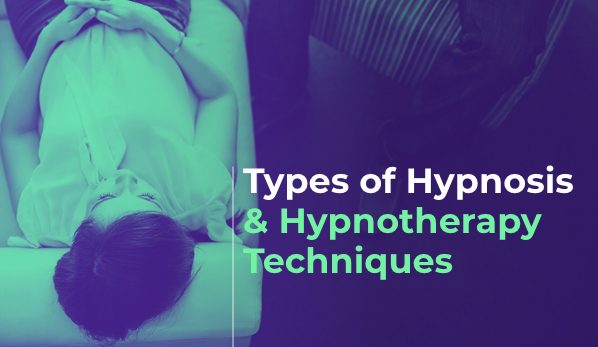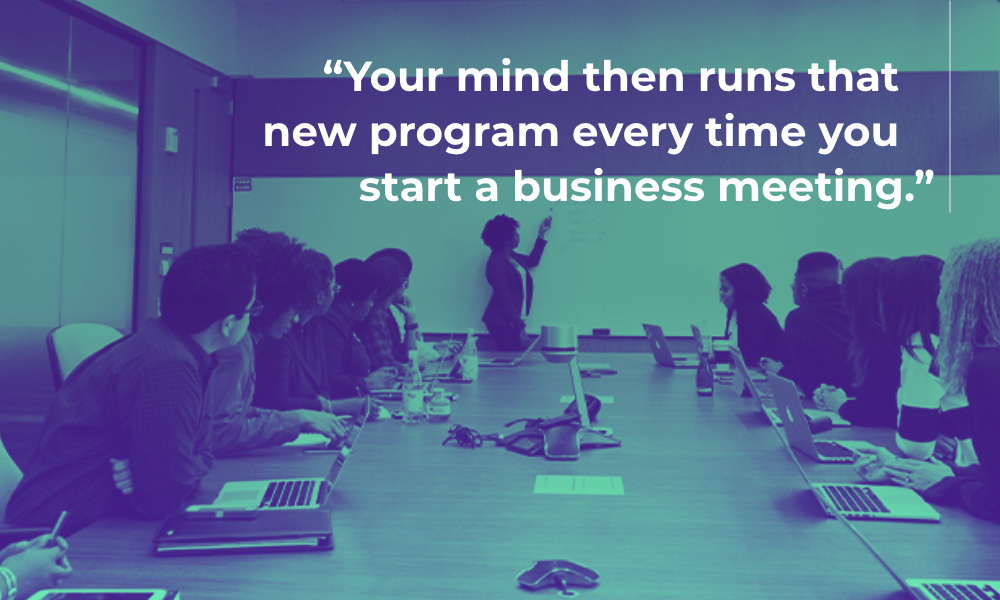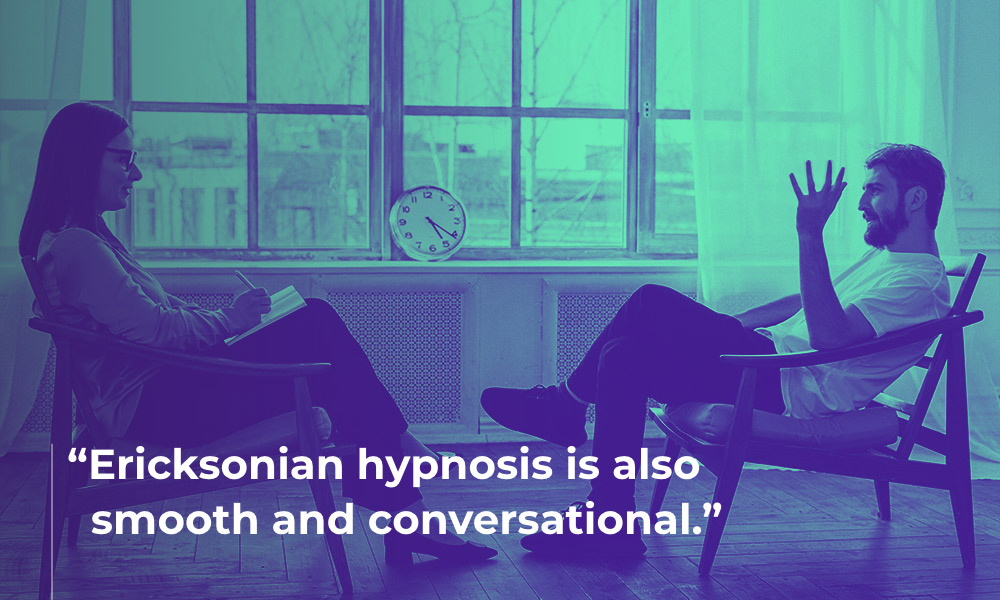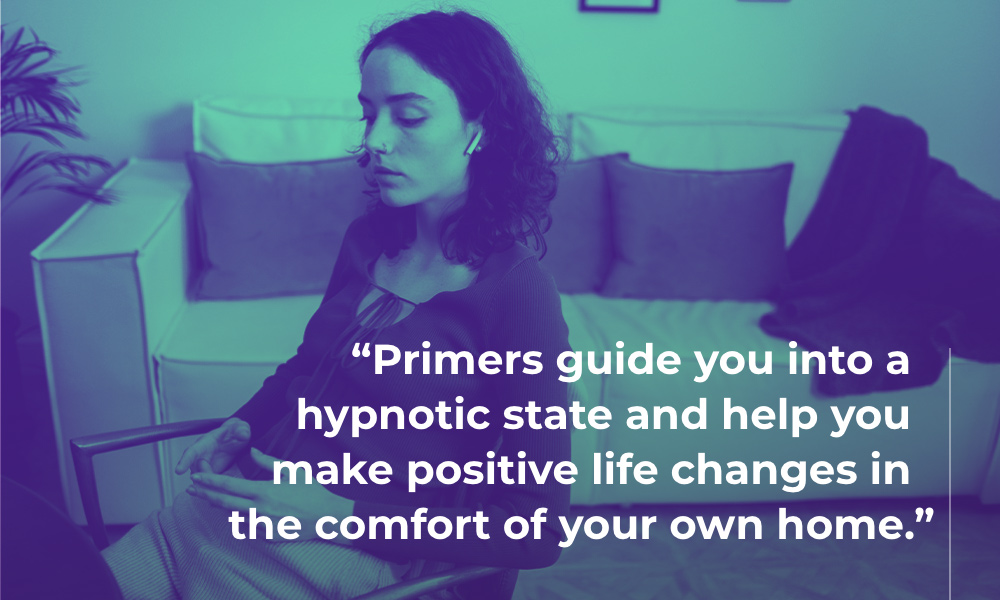You’ve probably heard that hypnosis changes lives. But can it change yours?
Maybe you’ve seen a friend or business colleague reap the benefits of hypnosis. One day they were dealing with some issue, and the next time you saw them, they seemed like an entirely new person.
But hypnotherapy may still seem mysterious.
Can it really be as simple as they say? Can you really change your life… just through hypnosis?
In reality, this happens all the time. Hypnotism may seem like a new-age technique, but it’s actually got over 125 years of science to back it up. And the science says that hypnosis is extremely effective at creating the change we need, whatever that change may be—whether it’s improving medical conditions, chronic pain, or mental health.
So, who could benefit from hypnotherapy? Lots of people!
Let’s give an example. Chris is an entrepreneur who wants to bolster their confidence when speaking with potential clients. They know that they can deliver amazing value, but they lose confidence when pitching. Every time they get on a call with potential clients, it’s almost as if they’re pushing the client away.
Chris knows that something’s causing the problem. They’ve tried everything else—deep breathing, visualization, even affirmations. But nothing works. Chris knows there’s something else behind this.
So Chris starts looking into hypnotherapy to figure out if it can help.
What Is Hypnotherapy?
Hypnotherapy is hypnosis with a trained practitioner. Like psychotherapy, its job is to create positive changes in your life, but it does so on a more rapid level. . The trained practitioner (a clinical hypnotherapist or trained hypnotist) guides you through proven methods to create fast-acting and long-lasting change.
With hypnotherapy, changes occur through your unconscious mind. The changes enter your subconscious, allowing you to live a changed life without even thinking about it. While a habit takes at minimum 21 days to create, hypnotherapy can help you make those changes in a matter of hours.
How Exactly Does Hypnotherapy Work?
Hypnosis gets you into a receptive and relaxed state of mind. In this state, you have high levels of suggestibility, and change is easily accepted. It gets the conscious mind out of the way, allowing the real powerhouse of change—the subconscious mind—to do its work.
Hypnotherapy uses proven methods from neuroscience—only it uses those tools when the client is deep in a hypnotic trance. Many of these techniques are drawn directly from neuroscience and psychology.
During hypnosis, our brain waves go deep into theta brain wave frequency. This is the creative frequency that hovers just above sleep.
By working in theta, a hypnotherapist can help you bypass the parts of your mind that are resistant to change. In hypnosis, your mind accepts the changes and commits them to memory.
Hypnotherapy isn’t mind control. In fact, because your unconscious mind is always working to keep you safe, there’s no way it could be. Your unconscious mind is always aware during hypnosis, keeping you safe.
Hypnosis, like psychotherapy, is all about the trust you have with your therapist. Any suggestions you hear that you don’t agree with will either bring you fully out of your trance, or they simply won’t stick.
Hypnotherapy helps us change the negative thoughts and beliefs that run on loops in our heads. These repeating thoughts cause undesired actions. By changing the thought, the action that follows naturally falls away.
For example, if you unconsciously take up less space each time you feel nervous in a business meeting, hypnotherapy can change that. You simply change the underlying thought that makes you want to close up. Your mind then runs that new program every time you start a business meeting.
How Effective Is Hypnotherapy?
Hypnotherapy has been proven to be highly effective in creating positive life changes. Hypnotic suggestions can be incredibly powerful, not only mentally but physically as well. In fact, some studies show hypnosis is more effective than Cognitive-Behavioral Therapy (CBT) when it comes to pain management. Hypnosis and hypnotherapy are two fields that are rapidly growing, and this growth is helping thousands take control of their change.
Curious about how hypnosis can help you? Read on to learn about the different types of hypnotherapy and which type might be best for you.
6 Types of Hypnosis Explained: Hypnotherapy in a Nutshell
Now that you understand what hypnotherapy is, let’s discuss the different types of hypnosis. Each of these types can create powerful change in your life. It’s simply a matter of finding the right fit for you.
1. Suggestion Hypnosis
Suggestion hypnosis is the most direct type of hypnotherapy, and it’s the easiest to understand. Often called “Direct Suggestion in Hypnosis,” this form of hypnosis is also known as traditional hypnosis, and it’s what many expect when they see a hypnotist.
Suggestion hypnosis uses direct commands to enact positive life changes. In Suggestion hypnosis, a practitioner helps their client reach theta frequency and then delivers beneficial suggestions through direct commands.
Often, the client may help the hypnotist craft these suggestions before the session to ensure the client receives the suggestions they want.
Suggestion hypnosis can be very effective for a variety of issues. For those simply wanting someone to fix a problem, this is a great choice. However, direct suggestion doesn’t include the client in the change process as much as the other types. If you want to participate in the process, the other types may be a better fit.
2. Ericksonian Hypnotherapy
The opposite of traditional hypnosis is Ericksonian hypnosis. Sometimes known as conversational hypnosis, Ericksonian hypnotherapy is a style modeled after a revolutionary in the hypnosis field.
Milton Erickson (1901-1980) was one of the most influential hypnotherapists of the modern era. Using indirect suggestion, Erickson created a permissive style of hypnosis that redefined how hypnosis could help people make positive life changes.
Ericksonian hypnosis is based on choice. Clients participate in all forms of hypnotherapy, and Ericksonian hypnosis is built on this model. Ericksonian hypnosis is also more smooth and more conversational.
There are a few misconceptions about conversational hypnosis that we want to clear up. Conversational doesn’t mean a client can be hypnotized against their will. Ericksonian hypnosis still follows the same structure as other forms of hypnotherapy—a client can only enter hypnosis when they’re ready for it. Many also believe that conversational hypnosis happens just like normal conversation, without a trance. When you opt for Ericksonian hypnosis, your hypnotist will guide you into trance using conversational tools. You’ll still receive the full calming benefits of a deep trance session
3. Regression Hypnotherapy
Like other types of hypnosis, regression focuses on the root cause of the problem, not the symptoms that it presents.
This form of therapy brings a client back to the past events that caused the problem. The hypnotist then helps the client rewrite the memory by introducing information that would have benefited the client during that event. Regression hypnosis helps clients relive the past experience with new knowledge.
Regression hypnotherapy seems complicated, but it’s not. Every time we access a memory, we rewrite it. Science has proven this happens at the physical level. Our brains literally rewrite the protein structures that form the memory.
Regression hypnotherapy helps us do that intentionally. This form of hypnosis helps clients rewrite the initial sensitizing event (ISE) that sparked the problem in the first place.
4. Neuro-Linguistic Programming (NLP)
Made famous in recent decades by the business mindset community, Neuro-Linguistic Programming (NLP) is the brainchild of Ericksonian hypnotherapy. The creators of NLP, Richard Bandler and John Grinder, studied the work of hypnotists like Erickson to boil down what made their techniques so effective.
The result is NLP. While it has roots in hypnosis, this hypnotherapy technique stands on its own. Practitioners do techniques without a formal hypnotic trance—sometimes in busy places like meeting rooms and airports.
NLP works by changing the processes that our brains use to create experiences. Our brains code information in images, sounds, and feelings. By changing the building blocks of these experiences, NLP can change how we experience the moments in our lives.
In recent decades, NLP has become integral to the business community. Many famous NLP practitioners (like Tony Robbins) have become top mindset coaches and successful entrepreneurs. But this incredible hypnotherapy technique can impact more than just mindset. NLP practitioners have helped with phobias, learning disabilities, grief, and more.
5. Self-Hypnosis
Self-hypnosis is by far the most flexible option on this list. And it’s also the one that takes the most effort. These techniques can be extremely difficult to learn—even for full-time hypnotists.
The reason self-hypnosis is so difficult is because a client has to be both the hypnotist and the person being hypnotized.
Our brains can struggle with this separation.
However, this type of hypnosis can provide the most benefits. Once you learn self-hypnosis, you can use it on whatever issue comes up in your life.
Self-hypnosis is also incredibly flexible. Learning even simple self-hypnosis techniques can teach you how to use hypnosis to overcome any problem. The time investment may be great, but the end payoff is worth it.
6. Primers
Primers are pre-recorded audio hypnosis tracks. Unlike other types of hypnotherapy, primers allow a client to use hypnosis without a clinical hypnotherapist or trained hypnotist being present.
Primers guide you into a hypnotic state and help you make positive life changes in the comfort of your own home. You can find them online, or you can try our hypnotherapy app. Primers are inexpensive, easy to find, and simple to use.
They’re a great starting point for those who are new to hypnosis techniques.
The one drawback of primers is that these tools can be inflexible. An experienced hypnotist can offer many different paths to resolve an issue, whereas an audio track offers only one. However, because of the powerful results they get,
Primers are a fantastic resource for anyone not comfortable meeting face to face with a hypnotherapist.
Which Hypnotherapy Type Should You Choose?
Let’s go back to Chris and his struggles when meeting with potential clients. Because he wants a direct form of hypnosis, Chris may opt for suggestion hypnotherapy. His hypnotist may also give him primers to reinforce the change between sessions, and he may even receive some self-hypnosis tools as well.
That’s right! Chris can benefit from multiple types of hypnotherapy. And he isn’t the only one. Every year, thousands of people worldwide change their life for the better with different types of hypnosis.
When applied to problems, hypnotherapy can be an incredibly effective form of healthcare. The different techniques can be layered on top of each other to provide a better hypnotherapy experience. Whether used alone or with other tools, hypnotherapy techniques can spark rapid changes in all of our lives.
So the question is: Which type of hypnotherapy would work best in your life? You never know until you try!
Try out the different types of hypnotherapy to find which one works best for you. Heck, try stacking them to see if you could benefit from multiple types. Just try.
And the next time you decide to make a big change, consider hypnosis. It’s fast, efficient, and incredibly powerful at sparking growth. Once you find the right type of hypnotherapy, making that change becomes incredibly easy. Download our app to learn more today, because change only happens when you start the process.




